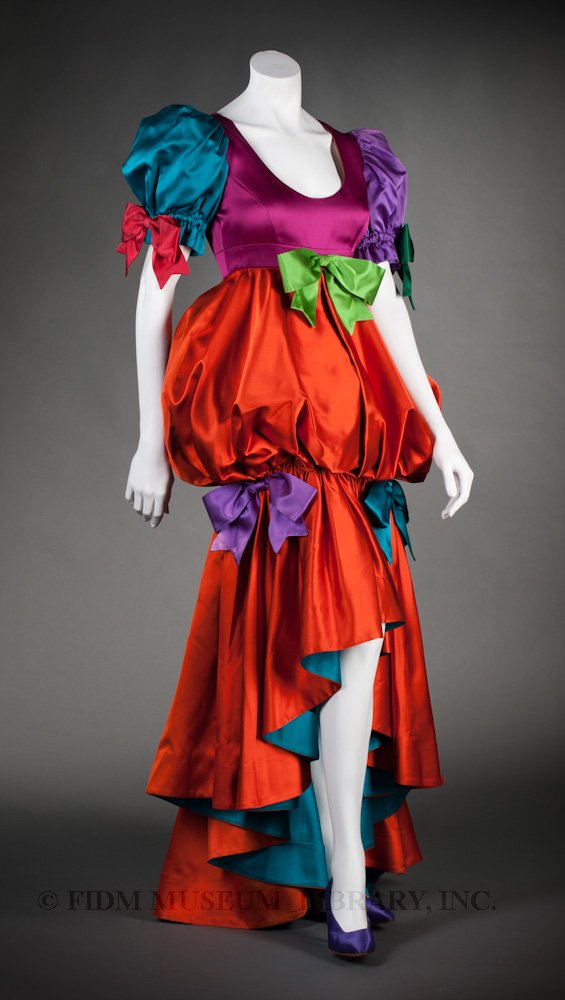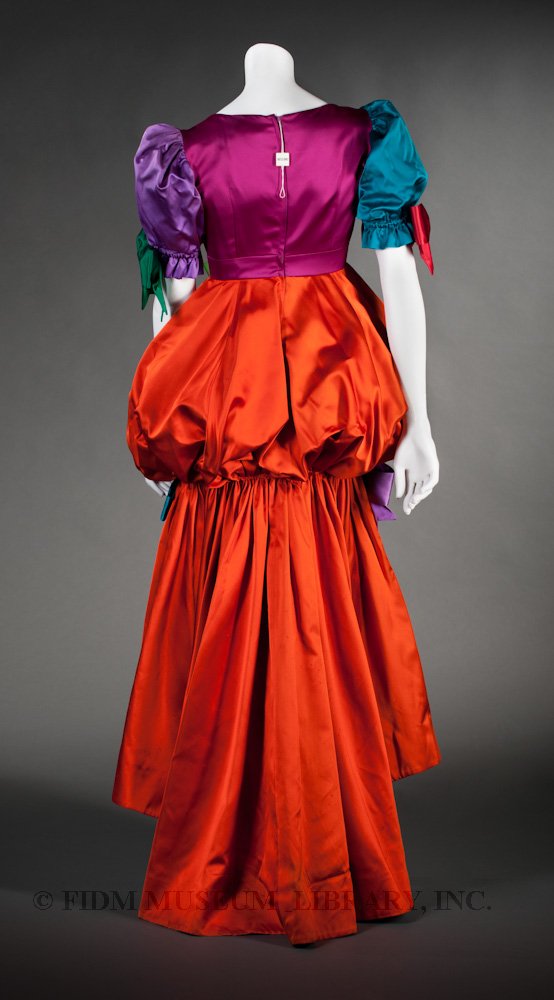Moschino Couture! evening gown, 1992
Made of rainbow-hued silk satin, this Moschino Couture! evening gown was worn to an early 1990s costume ball. Though we have few details about the event, if all the costumes were this eye-catching, it was surely a splendid evening. Any guesses as to the identity the wearer wanted to assume? Think of a well-known historical figure, one who supposedly said, "Let them eat cake!"

Evening gown
Moschino Couture!
1992
Gift of Eden Riegel
2010.1007.1
Cake for those who guessed Marie Antoinette! It's not a historically accurate reproduction of a late 18th century gown, but the extravagant silhouette, profusion of bows, and luxurious textile do evoke the sartorial spirit of the fashion-loving Queen Marie Antoinette (1755-1793). Though the ill-fated Queen came to prefer the radical simplicity of lightweight, unstructured chemise gowns, many portraits picture her in lavish gowns made from costly textiles, bedecked with ribbons, lace and bows. In this 1778 portrait, Marie Antoinette wears a structured robe à la francaise layered with swags, bows and lace.
Because of her notorious reputation and elevated social position, Marie Antoinette is an excellent choice for a masquerade costume. Historically, masquerades and costume balls were an opportunity to disrupt the established social order, liberating participants from social and economic hierarchies. And what's more liberating than discarding your everyday dress and assuming the garb (and persona) of someone else? Aristocrats dressed as milkmaids, milkmaids donned queenly robes, and social hierarchies were thoroughly, if temporarily, confused.
By the eighteenth century, masquerades were a popular form of entertainment throughout Europe. Some masquerades were ticketed events, held in public venues, while others were more intimate celebrations held at private homes. Large or small, public or private, the anonymity of a masquerade offered opportunities for transgression and indiscretion. The Yew Tree Ball, held in 1745 to celebrate the marriage of Louis XV to Maria Theresa of Spain, demonstrates how masquerades could mask illicit behavior. Though recently wed, Louis XV disguised himself as a yew tree, using the ball as an opportunity to rendezvous with Jeanne-Antoinette Poisson, a young woman who had recently caught his eye. She became his mistress, and as Madame de Pompadour, she dominated the French court, and French fashion, until her death in 1764.
As strict behavioral codes have loosened, the popularity of masquerades and costume balls has waned. Still popular in the early 20th century, by the end of the 1920s, festive masquerades were a novelty. The most famous costume ball of the 20th century was Truman Capote's 1966 Black and White Ball. Hosted by Capote at New York's Plaza Hotel, attendees were masked and clad in black and white costumes. The guest list was a true hodge-podge of American and international celebrity, including Vivian Leigh, Horst P. Horst, Oscar de la Renta, John Steinbeck, Robert Macnamara, Andy Warhol, and hundreds of other luminaries.
